Light is very important for the growth of any plant. As light is an important factor in the process of photosynthesis. In this process, light energy is converted into chemical energy for the plants.
Plants can’t make their food if they don’t get enough light. When you grow plants indoors then you will face the problem of lightning. Houseplants receive natural light coming from the window.
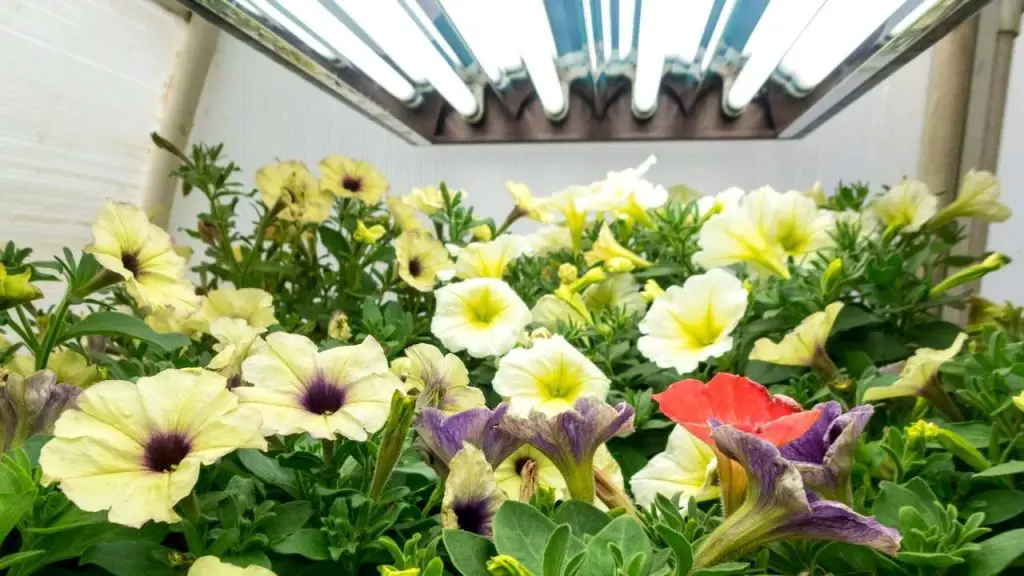
This light is not enough for the healthy growth of your favorite house plants. Annual flowers and vegetable plants both need light to develop properly. Inside your home, your plants will not get the perfect amount of Sunlight. But growing lights can solve your problem.
With the help of these growing lights then you can grow your houseplants any time of the year. You have to follow some guidelines then your house plants will thrive well in any type of grow light.
The Difference Between Grow Lights And Traditional Lights
The main difference between grow lights and traditional light is wavelength and heat. Traditional light has a narrow wavelength and produces heat. It means you can’t maintain traditional light according to the requirements of your plants and sometimes photosynthesis will not occur.
As a result, your plant will be destroyed. In the same way, you can’t control the heat of the sun so it may happen that your plant can burn.
If we talk about grow lights they produce a wide range of wavelengths that support photosynthesis. With the help of grow lights, you can maintain the light requirement of your plant. Grow lights produce less heat such as traditional bulbs so they are good for your house plants.
Different Types Of Grow Lights
Adequate natural light is not possible for houseplants but growing lights will help you. Grow lights are artificial lights that help to thrive in your plants.
Grow lights convert electricity into photons that help in the photosynthesis process. This is not an easy task to choose a perfect grow light for your plants. There are different types of grow lights available in the market such as fluorescent, LED, HID, and incandescent.
1- Fluorescent Grow Lights
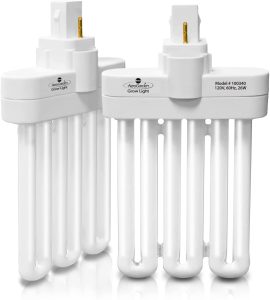
These energy-efficient lights give off the full spectrum. Fluorescent grow lights are suitable for all kinds of houseplants. They produce a bright blue color and make the environment cool for your plants.
These are very inexpensive grow lights and beginners try to use them for their house plants. These lights are perfect for non-flowering plants such as cannabis, lettuce, and herbs.
2- Metal Halide Grow Light (MH)
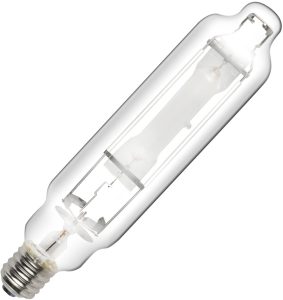
A mixture of metal compound and mercury vapor is used in metal halide grow lights. The light produced by metal halide grow lights have blue wavelengths and they encourage the growth of the vegetative part of the plant.
This light will help to reduce the chances of stretching in your plants due to insufficient light. The plants will start stretching because of the lack of light and produce weak branches. These lights are very effective and help your houseplants to thrive well.
3- High-Pressure Sodium Grow Light (HPS)
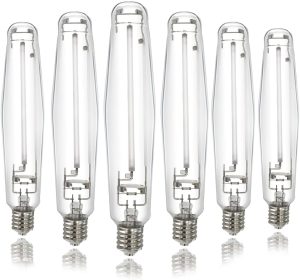
In such types of light mercury, sodium, and xenon gas are used to produce light for your houseplants. The gasses which are used in these light bulbs produce a different spectrum.
HPS lights help your indoor plants to produce flowers. These lights use less electricity and help your plants to grow taller.
4- Ceramic Metal Halide Grow Light (CMH)
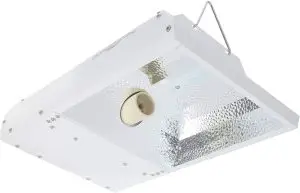
The gasses which are used in HPS lights are also used in ceramic metal halide grow light. The vaporized mixture in CMH light produces more efficient light.
These lights use less energy and provide a higher PAR rate. The life of your plants changed after installing the lights. CMH lights produce less heat so your plants will be protected from burn and they are very durable.
5- LED Grow Light
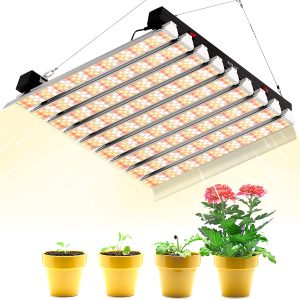
A perfect and best-advanced option for growing light for your indoor plants. It is expensive to grow lights for your plants but minimizes your electricity bills.
The price of the LED light can affect your budget but there are many advantages that you get after installing them. These lights last longer and don’t produce heat.
How Far Should You Place A Grow Light?
After choosing, the best grow lights for your house plants. The next step is to fix them at an ideal distance. There are conventional ways that gardeners follow to grow lights for their indoor plants.
Some like to fix grow lights just like traditional lights at home But some wise gardeners check the light power and keep an accurate distance between the plant and the light.
If you want to fix the light permanently then you must know the maximum height of these plants. Arrange the light according to the height of the plant. You should also consider weak and strong grow lights when you are fixing the position.
You should be very careful about the distance between the plant and the grow light because wrong measuring may burn the leaves of your favorite plants.
Whatever light source you are using should not only focus on your house plants. If the light is spread all over your living area then it will not increase your electricity bill. Now we will discuss one by one how far you should place different types of grow lights.
1- Fluorescent Grow Light Bulb
These are low-power grow lights that produce 30 to 110 lumens per wattage. According to the lumens, you should place your plant 6 to 12 inches from the grow light.
As the power of these lights is low so they will not burn the leaves of your favorite houseplants. As your plant grows you can increase or decrease the distance.
2- Metal Halide Grow Light (MH)
The number of lumens is about 75 to 100 in each wattage. As the number of lumens is greater than fluorescent lights, more heat will produce. Heat can burn the leaves of the plants.
So 8 inches of distance should be kept at any stage. You can better understand this if you are using a 150-watt MH light then and you should keep a distance of 8 inches between the plant and the light.
As the watt increases, the distance should also increase. In case you are living in a hot climate then you can place the light farther from your plant. This will keep the temperature balance and will not affect the stability of your plant.
3- High- Pressure Sodium (HPS)
62 to 140 lumens produce per wattage of HPS lights which means more heat will be generated. If you are using 400-watt HPS light then it requires a distance of 12 to 19 inches between the light and the plant.
As the wattages rise you should increase the distance. For instance, for 1000 wattage the distance should be 31 inches. When your plant starts producing flowers at this stage it needs more lumens so you should bring closer HPS lights to your plant.
This is a delicate stage so you can combine HPS light with a few fluorescent lights. Fluorescent lights do not harm your plant so you can place them close to your houseplants.
4- Ceramic Metal Halide (CMH)
Each wattage of ceramic metal halide light produces 95 lumens. According to the wattage of the light, you can increase or decrease the distance of the light with your plants.
CMH light is available in 400 watts, 800 watts, and 1000 watts. You can hang the slides at a distance of 18 three feet. When your plants produce fruit and flowers then you can adjust the height of the plants according to the plants’ needs.
You should keep an eye on the temperature of the environment so your plants will not be overheated.
5- LED Grow Light
Each wattage of LED light produces 60 lumens.
- If you are using a 250 to 400 wattage LED then hang the light at a distance of 12 to 25 inches.
- In case, you are using a 400 to 600 wattage LED then hang it at a distance of 20 to 30 inches.
- For 600 to 1000 wattage LED, the distance has to be maintained between the plants, and the light should be at least 36 inches.
When your plants are producing fruit and flowers then they need more light. Only at that time, you can hang the light there to your plants.
Benefits Of Different Colors In Houseplants
Red and blue lights play an important role in the growth of your plants. The ratio of these two colors is 5 :1. Your plants need more red color than blue. Now we are going to tell you about the participation of important colors in the life cycle of your plants.
1- RED
Red light makes it possible for your plants to thrive well without sunlight in the fruiting, flowering, and vegetative stage. When your plants are producing, they need more energy.
If you provide red grow lights to your production plant then it will increase the yield. When your plants are developing then the red light will also help.
2- BLUE
At an early stage, your plant needs blue light for its growth. The initial life of your plant needs strength. Your plant gets strength and stability from light energy. The lights containing a blue spectrum are very good for your young cheating.
3- GREEN
Greenlight reaches the photoreceptors of the plant. Green leaves need green life to do some work. It is helpful in the making of their food.
4- YELLOW
Some people think that yellow light is the reason for yellow marks on the leaves but it is not true yellow spectrum will not affect your plant.
How To Install LED Grow Lights For Houseplants?
By following simple steps you can install LED lights for your plants very easily.
1- DETERMINE THE PLANTS YOU WILL BE GROWING
First, you should determine the needs of your plant then start installing LED lights for them. The average need of any plant is 300 to 800 lumens but these numbers can change according to the need of your plant.
If you don’t know how many lumens your plants need then you can ask an expert or take help from Google.
2- HAVE A CLEAR IDEA ABOUT GROWING SPACE
The area of your house where are want to grow your plants is very important. If the growing space is very congested then less light is needed. For a large area, the more light your plants need.
According to the area, you need the number of lights so it will cover the whole mapped area.
3- PICK THE BEST SUITED POWER AND COLOUR OF LED
After deciding the area and the plants you want to grow. The third step is choosing the right wattage and right color for your plants.
Each plant needs an equal amount of light so you should be careful while choosing the place for installing the light. The color of LED light is very important for the growth of your plants.
4- CALCULATE THE DISTANCE BETWEEN THE PLANTS AND LED LIGHTS
We have explained earlier about the power and wattage to you. According to that information, you can decide the distance between the light and the plant.
5- FIX THE LIGHT
At this stage, you need a strong holder to hang the light in your growing area. Fix your LED light in the holder.
6- ROTATE YOUR PLANTS
The rotation of your plant is very important. When you rotate your plant continuously then each part of the plant will get an equal amount of light.
7- KEEP TRACK OF GROWTH AND BE SPECIFIC WITH THE DURATION OF ACTIVE LIGHTING
Now everything has been done, the distance, color, and power. You can readjust your light according to the needs of your plant. It is better to keep a record of your plants’ growth to adjust the height of the LED light.
The duration of using the light is also very important. According to the lighting needs of your plant you can and on the light.
